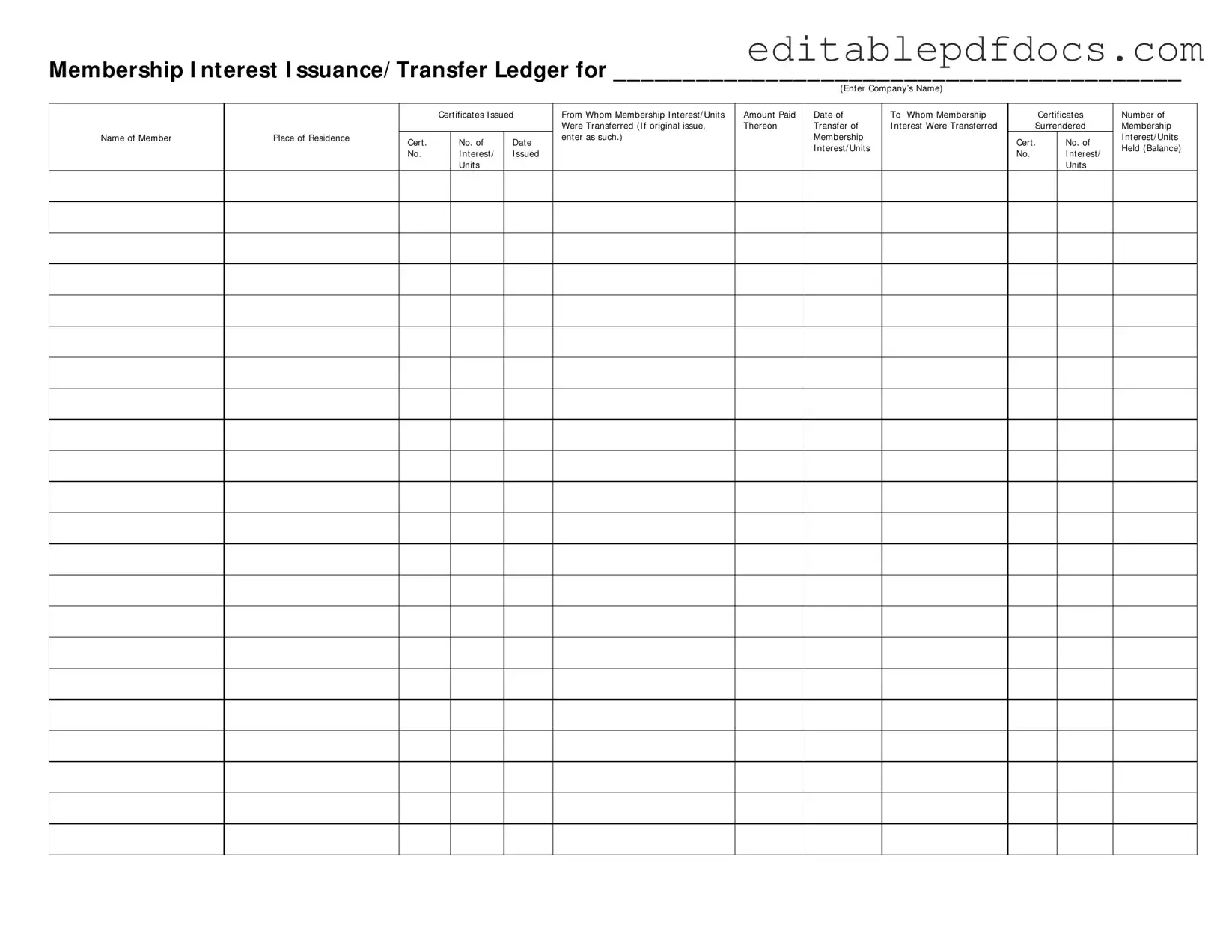Filling out the Membership Ledger form can be straightforward, but several common mistakes can lead to complications. One frequent error is leaving the company name blank or incomplete. This information is crucial for identifying the entity associated with the ledger. Ensure that the full name of the company is clearly entered at the top of the form.
Another common mistake involves incorrect or inconsistent entries in the certificates issued section. Individuals often fail to match the number of certificates with the corresponding membership interests or units. Double-checking these figures can prevent discrepancies that may arise later.
Many people also overlook the importance of specifying the amount paid for each membership interest or unit. This detail is essential for maintaining accurate financial records. Omitting this information can lead to confusion regarding the value of the interests held.
Additionally, the date of transfer is frequently mismanaged. Individuals may forget to fill this section out entirely or enter an incorrect date. Accurate dating is vital for tracking the history of membership interests and ensuring compliance with regulatory requirements.
Another mistake is failing to provide the name of the member involved in the transfer. This omission can complicate matters when trying to trace ownership or resolve disputes. It is essential to list the member's name clearly to maintain a transparent record.
People often neglect to include the place of residence for the member as well. This detail is necessary for legal and communication purposes. Without it, the ledger may lack the necessary information to contact members if needed.
When it comes to the section regarding certificates surrendered, individuals sometimes forget to indicate which certificates have been returned. This oversight can lead to inaccuracies in the ledger, making it difficult to determine the current status of membership interests.
Lastly, many individuals fail to accurately report the number of membership interests or units held after transfers. This balance is critical for understanding the current ownership structure. Regularly updating this information ensures that the ledger reflects the true state of membership interests.
